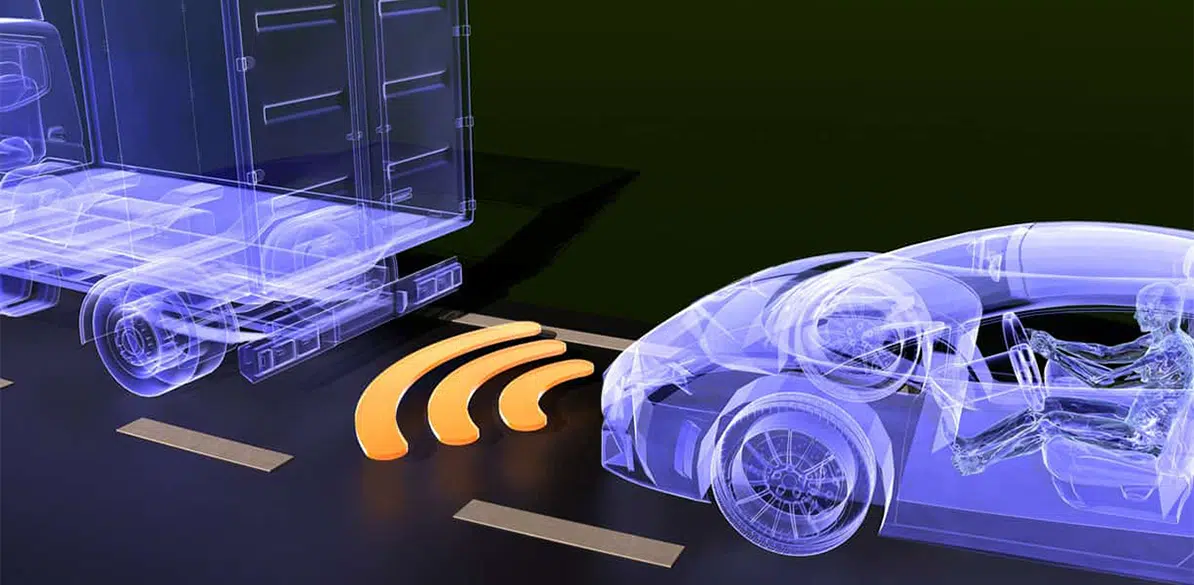AEB INTERURBAN – Autonomous emergency braking
Autonomous emergency braking on the road

Objective
This system is usually integrated into the Adaptive Cruise Control. Its purpose is to avoid or minimize the consequences of rear-end collisions with the vehicle in front.
How it works
When there is imminent danger of a rear-end collision, this ADAS system is able to act in two ways:
- By alerting the driver: the AEB INTERURBAN system will warn the driver that there is a risk of collision, first by means of a light signal on the dashboard or even on the windshield, and then using an audible alert.
- In the event of driver inaction, the AEB INTERURBAN system will take control in order to stop the vehicle, in which case the system will perform emergency braking, deactivating the system if the driver performs an evasive maneuver.
The AEB INTERURBAN system is usually independent of the AEB URBAN system, since it is designed to be used at speeds above 50 km/h.
Main components
The AEB system has different types of sensors from which it collects the necessary information:
- Cameras that are located in the upper area of the windshield.
- Radar, which is usually located in the front of the vehicle, behind the front emblem or in the upper or lower air vents.
- Accelerator control position sensor.
- Brake pedal control position or circuit pressure sensor.
- Steering wheel turning angle.
- Stability control unit (ESP).
Together, the camera and radar make the vehicle capable of warning the driver of the danger of a collision by comparing speeds and distances.
When it detects a vehicle in the same lane at a lower speed, it reduces its speed and stops accelerating. In the event that the reduction in speed is not sufficient to avoid a collision, the braking system acts via the ESP.
Normally when a vehicle is equipped with the AEB INTERURBAN system, it is also equipped with an adaptive cruise control system (ACC), which regulates both the maximum speed and the distance to the vehicle in front.
Collisions avoided
- When we suddenly encounter a traffic jam while driving on a highway.
- Vehicles traveling at extremely low speeds.
- Distractions at high speeds.
Effectiveness
Reduces road accidents by 50-60% (Directorate General of Transport, 2016).
Precautions and limitations
In adverse weather conditions such as heavy rain or snow, or if the sensors are dirty, the system may not work properly.
In these cases, the dashboard generally reports this anomaly. The majority of these systems are programmed to sense only the rear of vehicles such as cars and trucks. This is not the case for vehicles such as motorcycles or bicycles.
When an evasive maneuver is performed, the system is switched off, leaving the driver in full control of the vehicle.
Cost of the system
The AEB INTERURBAN system costs between 400 and 1,000 euros and is not normally standard equipment.
Mandatory status and dates
- For new vehicle type approvals it is mandatory from July 2022.
Warning
The INTERURBAN AEB system should not be confused with the forward collision warning system (FCW), since that system is limited to warning of collisions and it does not decelerate or brake the vehicle under any circumstances.
